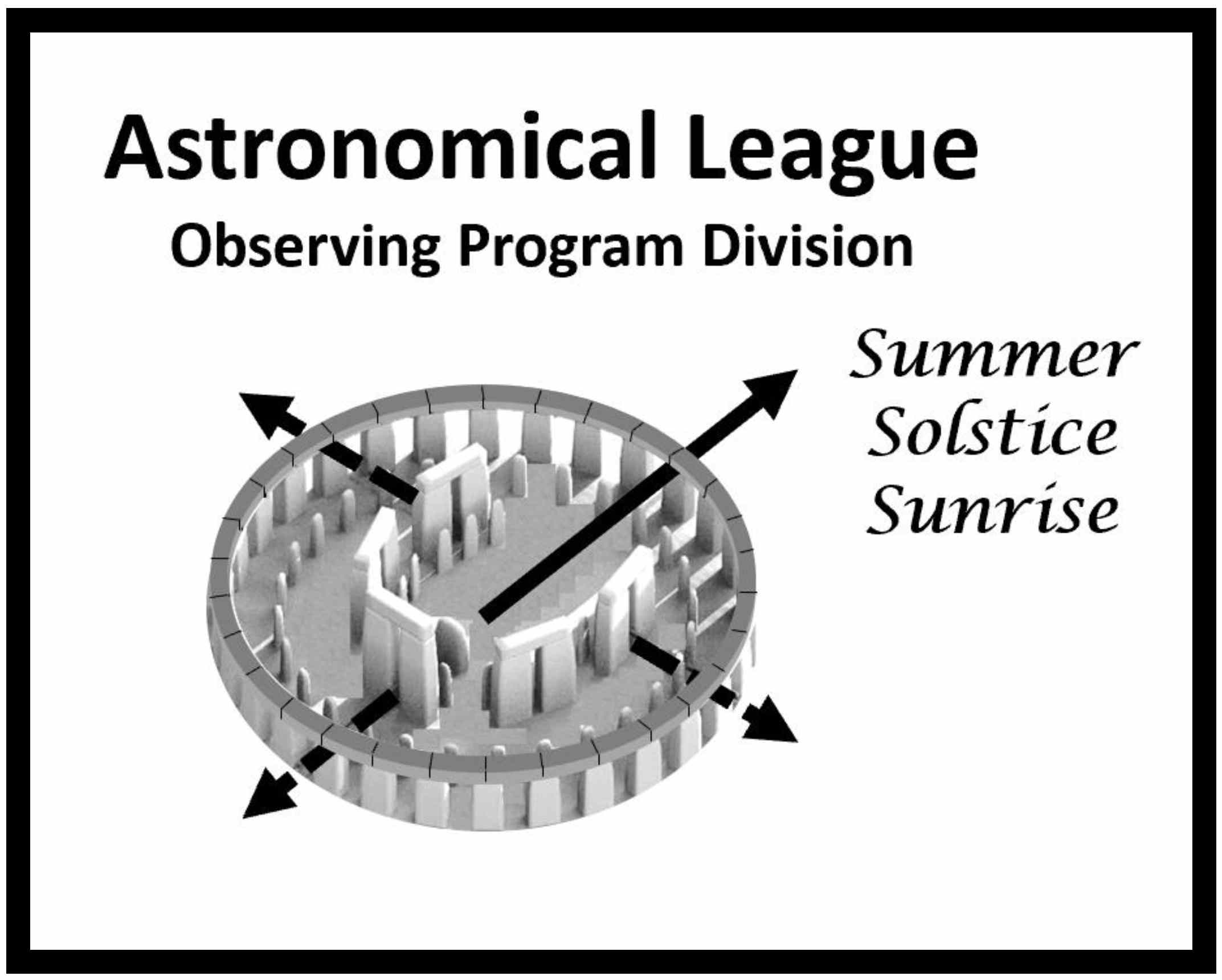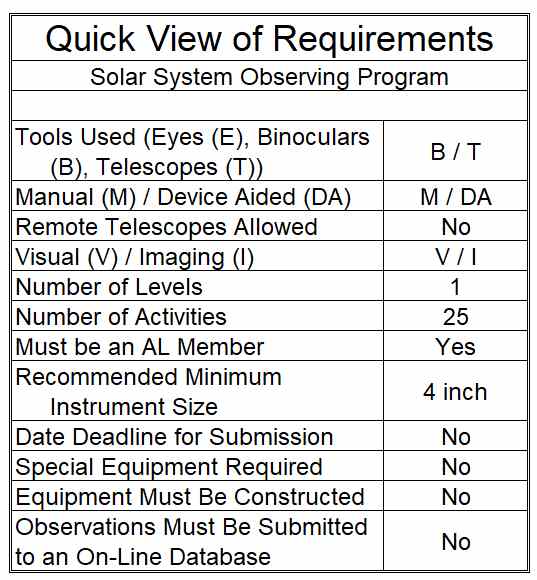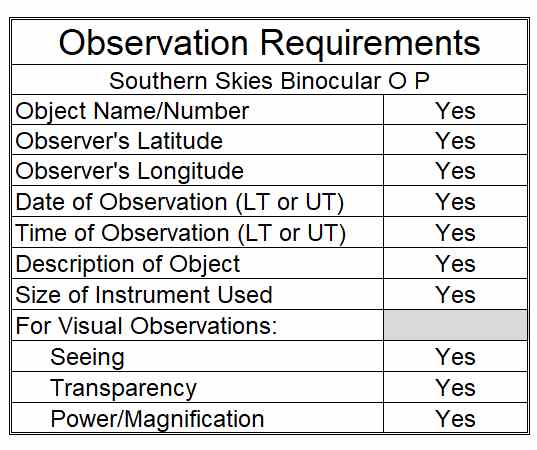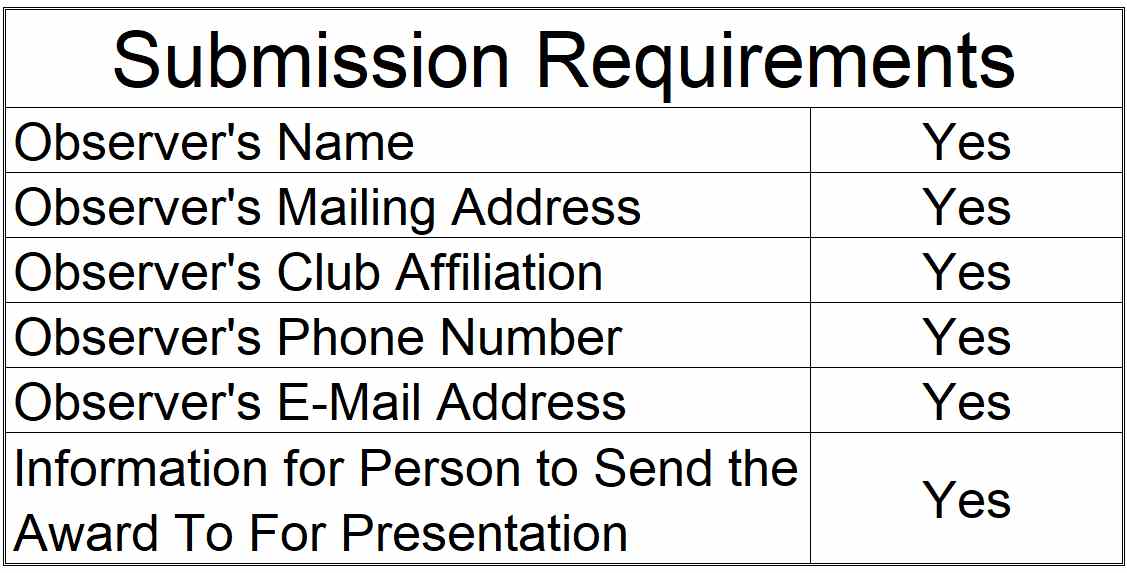Solar System Observing Program Coordinator:Charles E. Allen, III |
 |
Introduction
| Welcome to the Astronomical League’s Solar System Observing Program. The S.S.O.P. is a list of selected projects designed to introduce you to the pleasures of planetary observing. Observing skills come only with experience. An eye trained by observing will see more, regardless of what type of optical aid is used. Good observing skills reinforce the desire to observe. Observing trains the eye to see. It is a cycle that has to be willed to happen. Given the time and effort, it WILL happen. Once it happens, astronomy will become a very joyful lifelong experience.
In these days of increasing light pollution, the wonders of our own solar system may well take on an increased importance among skywatchers. Dark skies and moonless nights are not a priority for any of the listed projects. If you are intrigued by the enclosed projects, I would refer you to the Association of Lunar and Planetary Observers. ALPO members regularly observe solar system objects and have contributed significantly to our understanding of this corner of the universe. For more information, you may contact: ALPO Membership Sec./Treas. Whether you decide to go on to serious data collection or simply observe for your own edification – enjoy yourself. The sky is there for all. It is a great equalizer. Beneath its huge expanse, we are all reduced to nearly infinitesimal size, but in trying to understand it we grow. |
 |
Levels of the Solar System Observing Program
Solar System Eyes Only Certification: This is a partial certification available for the Solar System Observing Program. For those completing 5 of the Eyes Only requirements a certificate is available. These are marked with a “*E*” on the lists of Observing targets. It is suitable to meet the requirements of the For Your Eyes Only Observer Award, but not the other Master Observer Progression Awards. No telescope or binocular observations may be included in the Eyes Only Solar System Certification.
Solar System Binocular Certification: This is another partial certification available for the Solar System Observing Program. For those completing the 20 Eyes Only and Binocular requirements a certificate is available. These are marked with a “*B*” on the lists of Observing targets. It is suitable to meet the requirements of the Binocular Master Observer Award, but not the other Master Observer Progression Awards. No telescope observations may be included in the Binocular Solar System Certification.
Solar System Regular Certification: This is the traditional visual certification. Observations are typically done visually, but this certification may include some observations done through imaging. 25 observations are required. A pin and certificate will be awarded.
Solar System Imaging Certification: It is also possible to earn your Solar System certification through imaging. The list of requirements is the same. You need to use the log to record dates and times when you imaged the targets. The images can be submitted, but it is preferred that you post them on a website and include the website address in your submission. The images should include information on the exposures and the number of images that were stacked. You may do this certification both ways and receive two certificates, but only one pin will be awarded.
Definition of Binoculars Allowed for Binocular Observations and Certifications
The Astronomical League defines a binocular telescope as an observing device with two optical tubes and two eyepieces, where the eyepieces can be replaced with eyepieces of different focal lengths. “Bino-Viewers” have a single optical tube, but two eyepieces. “Bino-Viewers” and Binocular Telescopes may be used in any Observing Programs that are telescope-based. They may not be used in binocular programs.
Observing devices with two optical tubes and two eyepieces, where you cannot change the eyepieces, are binoculars. Binoculars may be used in any Observing Program requiring telescopes or binoculars. Most binoculars do not have sufficient magnification to replace telescopes.
Requirements and Rules
This certification is available to members of the Astronomical League, either through their local astronomical society or as members at large. If you are not a member and would like to become one, check with your local astronomical society, search for a local society on the Astronomical League Website (click here), or join as a Member-at-Large (click here).
| To qualify for the Astronomical League’s Solar System Observing Program certificate and pin, complete twenty-five of the suggested projects. Record your observations on copies of the included log, or equivalent. Some observations may require sketches, but don’t panic; artistic prowess is not required. Make as many copies of the log sheet as you will need. Fill in information appropriate to that project.
Be sure to include the object name, Date and Time of the observation (local or UT), Latitude and Longitude, Seeing and Transparency, and a description of the object. At the end of the projects, you will find a glossary of terms. To receive your Solar System Observers Program Certificate and pin, simply send a scanned COPY in PDF form of your logs along with your name, mailing address, email address, phone number, and club affiliation to the Solar System Observing Program Coordinator. If you prefer to send them via regular USPS mail, send complete COPIES of your logs (NOT STAPLED) and personal information to the Solar System Observing Program Coordinator. |
 |
A checklist has been provided to help you track your projects. It is available in PDF format as well as Word format. (PDF format, Word format)
Submitting for CertificationTo receive your certification, please send completed logs to the Solar System Observing Program Coordinator or have them reviewed and approved by an officer of your astronomy club, who can then send an email to the Coordinator. Be sure to indicate whether you have done the Binocular Requirements using just your eyes or a pair of binoculars. |
 |
Upon verification of your submission and of your active membership in the Astronomical League, your recognition (certificate, pin, etc.) will be sent to you or to the awards coordinator for your society, as you specified. Your name will also appear in an upcoming issue of the Reflector magazine and in the Astronomical League’s online database. Congratulations. Good luck with your next observing challenge.
IF YOU SUBMIT BY EMAIL AND DO NOT RECEIVE A CONFIRMATION EMAIL FROM ME WITHIN 48 HOURS, PLEASE NOTIFY ME BY PHONE OR TEXT. THANK YOU.
Happy Observing!
Chuck
For a printable version of the Project Log, click here.
PROJECT LOG
NAME OF PROJECT___________________________________________________
Project Begun____________________Project Ended__________________
Seeing Conditions___________________________________________________
Binocular Size________________________________________________
Telescope: Type______________________________________________
Aperture___________________________________________________
Focal Length________________________________________________
Eyepiece Focal Length________________________________________
Observational Notes, Comments and Impressions:
______________________________________________________________
Add pages with copies of any supplementary sketches.
Solar System Observing Program Coordinator:Charles E. Allen, III |
Notes:
Looking for more Information and Opportunities?
- Galileo’s TOES: The Galilean Moons that orbit Jupiter are in a continual dance with the planet. For those who take the time and make the effort, we have developed a Galileo’s TOES Certification to recognize the accomplishment. For information about this certification, click Galileo’s TOES.
- Galileo’s TOES II: Every 6 years, the plane of the orbits of Jupiter’s Galilean Moons aligns so well with Jupiter that we are treated to mutual occultations of Jupiter’s Galilean moons. For those who take the time and make the effort, we have developed a Galileo’s TOES II Certification to recognize the accomplishment. For information about this certification, click Galileo’s TOES II.
- The Astronomical League Web Store has manuals available specifically for Mars and Jupiter. They are not required and go beyond the requirements for this Observing Program, but if you would like more in-depth information about these planets, they are available from the Astronomical League store:



